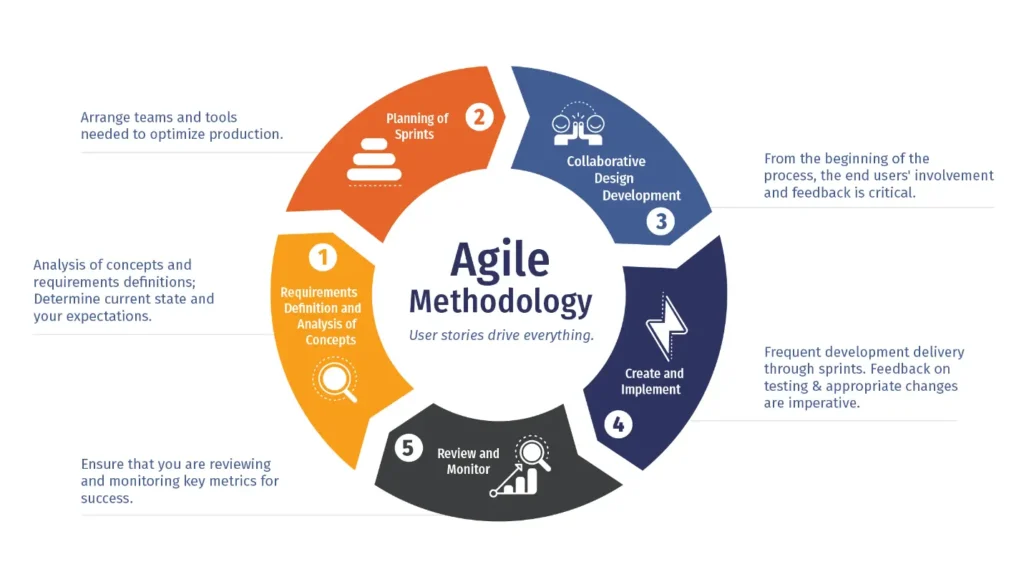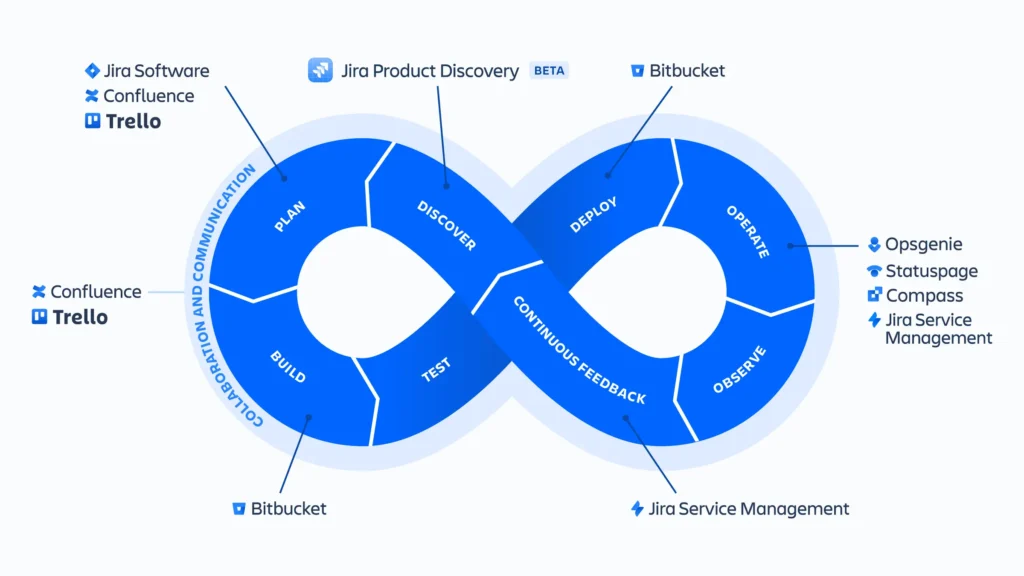What is a common misconception about Agile and DevOps?

What is a common misconception about Agile and DevOps? Many people think Agile and DevOps are the same, but they’re not. Agile focuses on improving the process of software development through iterative progress, while DevOps bridges the gap between development and operations to ensure smooth deployment and continuous integration.
Understanding this difference and the common misconception about Agile and DevOps is crucial for teams aiming to enhance their workflow and product delivery. Let’s discuss this and clear up the confusion surrounding Agile and DevOps.
Table of Contents
What is a common misconception about Agile and DevOps? How do they differ?
Understanding the differences between agile and DevOps is key to optimizing your team’s workflow.
So, how do agile and DevOps interrelate, and what sets them apart?
- Focus: Agile focuses on improving the software development process through iterative progress, while DevOps emphasizes seamless collaboration between development and operations.
- Principles: Agile principles center on flexibility, customer feedback, and rapid delivery. DevOps principles focus on automation, continuous integration, and consistent deployment.
- Team Structure: Agile involves cross-functional teams working on sprints. DevOps integrates development and operations teams to streamline deployment and maintenance.
- Scope: Agile addresses the software development lifecycle, while DevOps covers the entire lifecycle, including development, testing, deployment, and operations.
- Goals: Agile aims to deliver small, incremental changes quickly. DevOps aims to deliver stable, reliable software through continuous delivery and deployment.
- Tools: Agile uses tools like Scrum and Kanban boards, while DevOps relies on automation tools such as Jenkins, Docker, and Kubernetes.
What are the core principles of Agile?
Agile is all about flexibility and delivering value quickly. Following are the core principles that make the agile approach so effective.
- Customer collaboration: Working closely with customers to understand their needs and feedback.
- Responsive to change: Being open to changes even late in development.
- Frequent delivery: Delivering working software frequently, from a few weeks to a few months.
- Continuous improvement: Regularly reflect on how to become more effective and adjust accordingly.
- Empowered teams: Encouraging self-organizing teams that are motivated and given the support they need.
- Simplicity: Focusing on simplicity and maximizing the amount of work not done.
- Face-to-face communication: Valuing face-to-face conversation as the most efficient and effective method of conveying information.
- Sustainable development: Promoting a pace that can be maintained indefinitely without burnout.
Read More: How Do Technology Giants Control The Global Security?
What are the core principles of DevOps?
DevOps aims to bridge the gap between development and operations to enhance the software delivery process.
Let’s break down its core principles.
- Collaboration: Encouraging close cooperation between development and operations teams.
- Automation: Using automation tools to streamline repetitive tasks and processes.
- Continuous integration: Frequently integrating code changes to detect and address issues early.
- Continuous delivery: Ensuring code changes are automatically tested and ready for deployment.
- Monitoring and logging: Keeping a close eye on application performance and infrastructure to quickly identify and fix issues.
- Infrastructure as code: Managing and provisioning computing resources using machine-readable scripts.
- Culture of ownership: Promoting a sense of ownership and responsibility for the entire lifecycle of the product.
- Customer-focused feedback: Using customer feedback to guide improvements and updates.
What are the benefits of using Agile?
Agile offers a flexible approach to software development that can significantly improve team productivity and product quality.
Here are the key benefits:
- Faster delivery: Agile enables quick and frequent releases, allowing teams to deliver value to customers faster.
- Improved quality: Continuous testing and feedback help identify and fix issues early in development.
- Customer satisfaction: Regular updates and improvements based on customer feedback ensure that the product meets user needs.
- Increased flexibility: Agile’s iterative approach allows teams to adapt efficiently to changes and new requirements.
- Better team collaboration: Cross-functional teams working closely together enhance communication and cooperation.
- Reduced risk: Frequent releases and feedback loops help identify and mitigate risks early on.
What are the benefits of using DevOps?
DevOps enhances software delivery by fostering collaboration between development and operations teams.
Here are the key benefits:
- Faster delivery: Continuous integration and delivery allow for quicker release cycles, allowing users to receive features and fixes more quickly.
- Improved collaboration: DevOps promotes a culture of collaboration, breaking down silos between development and operations teams.
- Increased efficiency: Automating repetitive tasks reduces manual effort, allowing teams to focus on more critical tasks.
- Enhanced quality: Continuous testing and monitoring help catch and resolve issues early, leading to more reliable software.
- Scalability: Infrastructure as code enables easy scaling and management of resources, ensuring the system can handle increased demand.
- Better security: Integrated security practices ensure that vulnerabilities are addressed early in development.
- Higher customer satisfaction: Faster and more reliable releases improve the overall user experience, leading to greater customer satisfaction.
How do Agile and DevOps interrelate?
Agile and DevOps can complement each other to create a seamless and efficient development process.
Here are some ways they can work together effectively:
- Shared goals: Aligning the goals of development and operations teams to focus on delivering high-quality software quickly and reliably.
- Continuous feedback: Integrating continuous feedback loops from agile sprints and DevOps monitoring to improve processes and products.
- Collaboration tools: Using tools supporting agile and DevOps practices, such as JIRA for agile project management and Jenkins for continuous integration.
- Automated testing: Implementing automated testing within the agile development cycle to ensure continuous integration and delivery in the DevOps pipeline.
- Integrated workflows: Creating workflows incorporating agile practices like sprints and backlogs with DevOps practices like continuous deployment and infrastructure as code.
- Cross-functional teams: Building teams, including developers and operations staff, to foster collaboration and shared responsibility.
- Regular retrospectives: Conducting retrospectives that include both agile and DevOps perspectives to identify and implement improvements continuously.
- Culture of ownership: Encouraging a culture where both development and operations teams take ownership of the entire product lifecycle, from development to deployment and maintenance.
Conclusion
Distinguishing between agile and DevOps is crucial for optimizing workflows. Agile improves the development process through flexibility and iteration, while DevOps enhances collaboration between development and operations.
Understanding their unique roles helps teams integrate practices effectively, leading to faster, more reliable software delivery and improved team performance.
See More: What is Demand Flow Technology?



